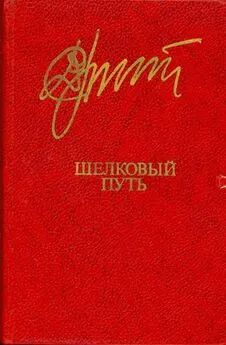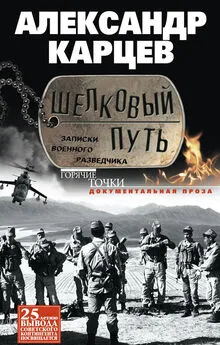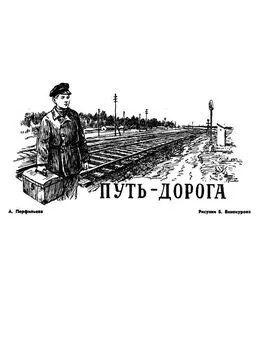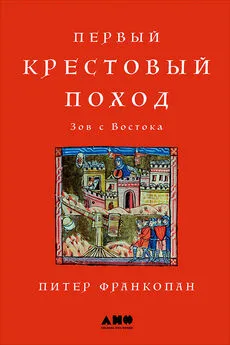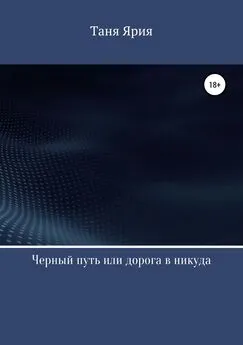Питер Франкопан - Шелковый путь. Дорога тканей, рабов, идей и религий
- Название:Шелковый путь. Дорога тканей, рабов, идей и религий
- Автор:
- Жанр:
- Издательство:Литагент 5 редакция
- Год:2017
- Город:Москва
- ISBN:978-5-699-95706-4
- Рейтинг:
- Избранное:Добавить в избранное
-
Отзывы:
-
Ваша оценка:
Питер Франкопан - Шелковый путь. Дорога тканей, рабов, идей и религий краткое содержание
Вы увидите, что история развивалась совсем не так, как мы привыкли изучать в школе. Так, столетия назад интеллектуальные центры мира, «Оксфорды» и «Кембриджи», «Гарварды» и «Йели», находились не в Европе, а в городах Средней Азии, куда и съезжалась вся просвещенная молодежь в поисках успеха.
Шелковый путь. Дорога тканей, рабов, идей и религий - читать онлайн бесплатно ознакомительный отрывок
Интервал:
Закладка:
523
Constantine Porphyrogenitus, De Administrando Imperio , 9, рр. 58–62.
524
De Administrando Imperio , 9, р. 60.
525
Ibn Rusta, Kitāb al-a ʿ lāq an-nafīsa , tr. Lunde and Stone, ‘Book of Precious Gems’, in Land of Darkness , р. 127.
526
Ibn Faḍlān, ‘Book of Ahmad ibn Faḍlān’, р. 45.
527
Ibn Rusta, ‘Book of Precious Gems’, р. 127.
528
Ibn Faḍlān, ‘Book of Ahmad ibn Faḍlān’, рр. 46–49.
529
A. Winroth, The Conversion of Scandinavia (New Haven, 2012), рр. 78–79.
530
M. Bogucki, ‘The Beginning of the Dirham Import to the Baltic Sea and the Question of the Early Emporia’, in A. Bitner-Wróblewska and U. Lund-Hansen (eds), Worlds Apart? Contacts across the Baltic Sea in the Iron Age: Network Denmark-Poland 2005–2008 (Copenhagen, 2010), рр. 351–361. О Швеции – I. Hammarberg, Byzantine Coin Finds in Sweden (1989); C. von Heijne, Särpräglat. Vikingatida och tidigmedeltida myntfynd från Danmark, Skåne, Blekinge och Halland (ca. 800–1130) (Stockholm, 2004).
531
T. Noonan, ‘Why Dirhams First Reached Russia: The Role of Arab-Khazar Relations in the Development of the Earliest Islamic Trade with Eastern Europe’, Archivum Eurasiae Medii Aevi 4 (1984), рр. 151–182, и см., главным образом, T. Noonan, ‘Dirham Exports to the Baltic in the Viking Age’, in K. Jonsson and B. Malmer (eds), Sigtuna Papers: Proceedings of the Sigtuna Symposium on Viking-Age Coinage 1–4 June 1989 (Stockholm, 1990), рр. 251–257.
532
Ibn Rusta, ‘Book of Precious Gems’, рр. 126–127.
533
Происхождение слова «славяне» до сих пор остается не выясненным, по одной из версий оно произошло от slauos – индоевр. «народ». (Примеч. ред.)
534
Там же.
535
De Administrando Imperio , 9, р. 60.
536
Ibn Faḍlān, ‘Book of Ahmad ibn Faḍlān’, р. 47.
537
D. Wyatt, Slaves and Warriors in Medieval Britain and Ireland, 800–1200 (Leiden, 2009).
538
L. Delisle (ed.), Littérature latine et histoire du moyen âge (Paris, 1890), р. 17.
539
См. J. Henning, ‘Strong Rulers – Weak Economy? Rome, the Carolingians and the Archaeology of Slavery in the First Millennium ad’, in J. Davis and M. McCormick (eds), The Long Morning of Medieval Europe: New Directions in Early Medieval Studies (Aldershot, 2008), рр. 33–53; о Новгороде см. H. Birnbaum, ‘Medieval Novgorod: Political, Social and Cultural Life in an Old Russian Urban Community’, California Slavic Studies (1992), 14, р. 11.
540
Adam of Bremen, History of the Archbishops of Hamburg Bremen , ed. and tr. F. Tschan (New York, 1959), 4.6, р. 190.
541
B. Hudson, Viking Pirates and Christian Princes: Dynasty, Religion and Empire in the North Atlantic (Oxford, 2005), р. 41; в целом см. также S. Brink, Vikingarnas slavar: den nordiska träldomen under yngre järnålder och äldsta medeltid (Stockholm, 2012).
542
T. Noonan, ‘Early Abbasid Mint Output’, Journal of Economic and Social History (1986), рр. 113–175; R. Kovalev, ‘Dirham Mint Output of Samanid Samarqand and its Connection to the Beginnings of Trade with Northern Europe (10th Century)’, Histoire & Mesure 17.3–4 (2002), рр. 197–216; T. Noonan and R. Kovalev, ‘The Dirham Output and Monetary Circulation of a Secondary Samanid Mint: A Case Study of Balkh,’ in R. Kiernowski (ed.), Moneta Mediævalis: Studia numizmatyczne i historyczne ofiarowane Profesorowi Stanisławowi Suchodolskiemu w rocznicę urodzin ( Warsaw, 2002), рр. 163–174.
543
R. Segal, Islam’s Black Slaves: The Other Black Diaspora (New York, 2001), р. 121.
544
Ibn Ḥawqal, Kītāb ṣūrat al-ard , цитируется по D. Ayalon, ‘The Mamluks of the Seljuks: Islam’s Military Might at the Crossroads’, Journal of the Royal Asiatic Society 6.3 (1996), р. 312. С этого момента я переключаюсь с термина «тюрки» на «турки», чтобы отличить народы степей от предков современной Турции.
545
W. Scheidel, ‘The Roman Slave Supply’, in K. Bradley, Р. Cartledge, D. Eltis and S. Engerman (eds), The Cambridge World History of Slavery , 3 vols (Cambridge, 2011), 1, рр. 287–310.
546
См. F. Caswell, The Slave Girls of Baghdad. The Qiyan in the Early Abbasid Era (London, 2011), р. 13.
547
Tacitus, Annals , 15.69, р. 384.
548
Ibn Buṭlān, Taqwīm al-ṣiḥḥa , цитируется по G. Vantini, Oriental Sources concerning Nubia (Heidelberg, 1975), рр. 238–239.
549
Kaykāvūs ibn Iskandar ibn Qābūs, ed. and tr. R. Levy, Naṣīḥat-nāma known as Qābūs-nāma , (London, 1951), р. 102.
550
Там же.
551
D. Abulafia, ‘Asia, Africa and the Trade of Medieval Europe’, in M. Postan, E. Miller and C. Postan (eds), Cambridge Economic History of Europe: Trade and Industry in the Middle Ages (2nd edn, Cambridge, 1987), р. 417. Также см. D. Mishin, ‘The Saqaliba Slaves in the Aghlabid State’, in M. Sebök (ed.), Annual of Medieval Studies at CEU 1996/1997 (Budapest, 1998), рр. 236–244.
552
Ibrāhīm ibn Ya ʿqūb, tr. Lunde and Stone, in Land of Darkness , рр. 164–165. О роли Праги как рабовладельческого центра – D. Třeštík, ‘“Eine große Stadt der Slawen namens Prag”: Staaten und Sklaven in Mitteleuropa im 10. Jahrhundert’, in Р. Sommer (ed.), Boleslav II: der tschechische Staat um das Jahr 1000 (Prague 2001), рр. 93–138.
553
Ibn al-Zubayr, Book of Gifts and Rarities , рр. 91–92; A. Christys, ‘The Queen of the Franks Offers Gifts to the Caliph Al-Muktafi’, in W. Davies and Р. Fouracre (eds), The Languages of Gift in the Early Middle Ages (Cambridge, 2010), рр. 140–171.
554
Ibrāhīm ibn Ya‘qūb, рр. 162–163.
555
R. Naismith, ‘Islamic Coins from Early Medieval England’, Numismatic Chronicle 165 (2005), рр. 193–222; R. Naismith, ‘The Coinage of Offa Revisited’, British Numismatic Journal 80 (2010), рр. 76–106.
556
M. McCormick, ‘New Light on the “Dark Ages”: How the Slave Trade Fuelled the Carolingian Economy’, Past & Present 177 (2002), рр. 17–54; а также J. Henning, ‘Slavery or Freedom? The Causes of Early Medieval Europe’s Economic Advancement’, Early Medieval Europe 12.3 (2003), рр. 269–277.
557
Ibn Khurradādhbih, ‘Book of Roads and Kingdoms’, р. 111.
558
Ibn Ḥawqal, Kītāb ṣūrat al-ard , tr. Lunde and Stone, ‘Book of the Configuration of the Earth’, in Land of Darkness , р. 173.
559
Там же а также Al-Muqaddasī, Land of Darkness , р. 170.
560
al-Jāḥiẓ, Kitāb al-Ḥayawān , цитируется в C. Verlinden, L’Esclavage dans l’Europe mediévale , 2 vols (Bruges, 1955–1977), 1, р. 213.
561
Там же.
562
Verlinden, Esclavage , 2, рр. 218–230, 731–732; W. Phillips, Slavery from Roman Times to the Early Transatlantic Trade (Manchester, 1985), р. 62.
563
H. Loyn and R. Percival (eds), The Reign of Charlemagne: Documents on Carolingian Government and Administration (London, 1975), р. 129.
564
В Германии раньше было принято делать то же самое, используя приветствие «Servus».
565
Adam of Bremen, Gesta Hammaburgensis ecclesiae pontificum , tr. T. Reuter, History of the Archbishops of Hamburg-Bremen (New York, 2002), I. 39–41.
566
Pactum Hlotharii I , in McCormick, ‘Carolingian Economy’, р. 47.
567
G. Luzzato, An Economic History of Italy from the Fall of the Roman Empire to the Sixteenth Century , tr. Р. Jones (London, 1961), рр. 35, 51–53; Phillips, Slavery , р. 63.
568
McCormick, ‘Carolingian Economy’, рр. 48–49.
569
Hudūd al- ʿ Ālam , in The Regions of the World: A Persian Geography 372 AH – 982 AD , tr. V. Minorsky, ed. C. Bosworth (London, 1970), рр. 161–162.
570
Ibn Faḍlān, ‘Book of Ahmad ibn Faḍlān’, р. 44; Ibn Khurradādhbih, ‘Book of Roads and Kingdoms’, р. 12; Martinez, ‘Gardīzī’s Two Chapters on the Turks’, рр. 153–154.
571
Russian Primary Chronicle , tr. S. Cross and O. Sherbowitz-Wetzor (Cambridge, MA, 1953), р. 61.
572
Annales Bertiniani , ed. G. Waitz (Hanover, 1885), р. 35.
573
Mas ʿūdī, ‘Meadows of Gold’, рр. 145–146; Ibn Ḥawqal, ‘Book of the Configuration of the Earth’, р. 175.
574
Ibn Ḥawqal, ‘Book of the Configuration of the Earth’, р. 178.
575
R. Kovalev, ‘Mint Output in Tenth Century Bukhara: A Case Study of Dirham Production with Monetary Circulation in Northern Europe’, Russian History / Histoire Russe 28 (2001), рр. 250–259.
576
Russian Primary Chronicle , р. 86.
577
Там же, р. 90.
578
H. Halm, Das Reich des Mahdi. Der Aufstieg der Fatimiden (875–973) (Munich, 1991); F. Akbar, ‘The Secular Roots of Religious Dissidence in Early Islam: The Case of the Qaramita of Sawad Al-Kufa’, Journal of the Institute of Muslim Minority Affairs 12.2 (1991), рр. 376–390. О распаде халифата в этот период см. M. van Berkel, N. El Cheikh, H. Kennedy and L. Osti, Crisis and Continuity at the Abbasid Court: Formal and Informal Politics in the Caliphate of al-Muqtadir (Leiden, 2013).
Читать дальшеИнтервал:
Закладка:


